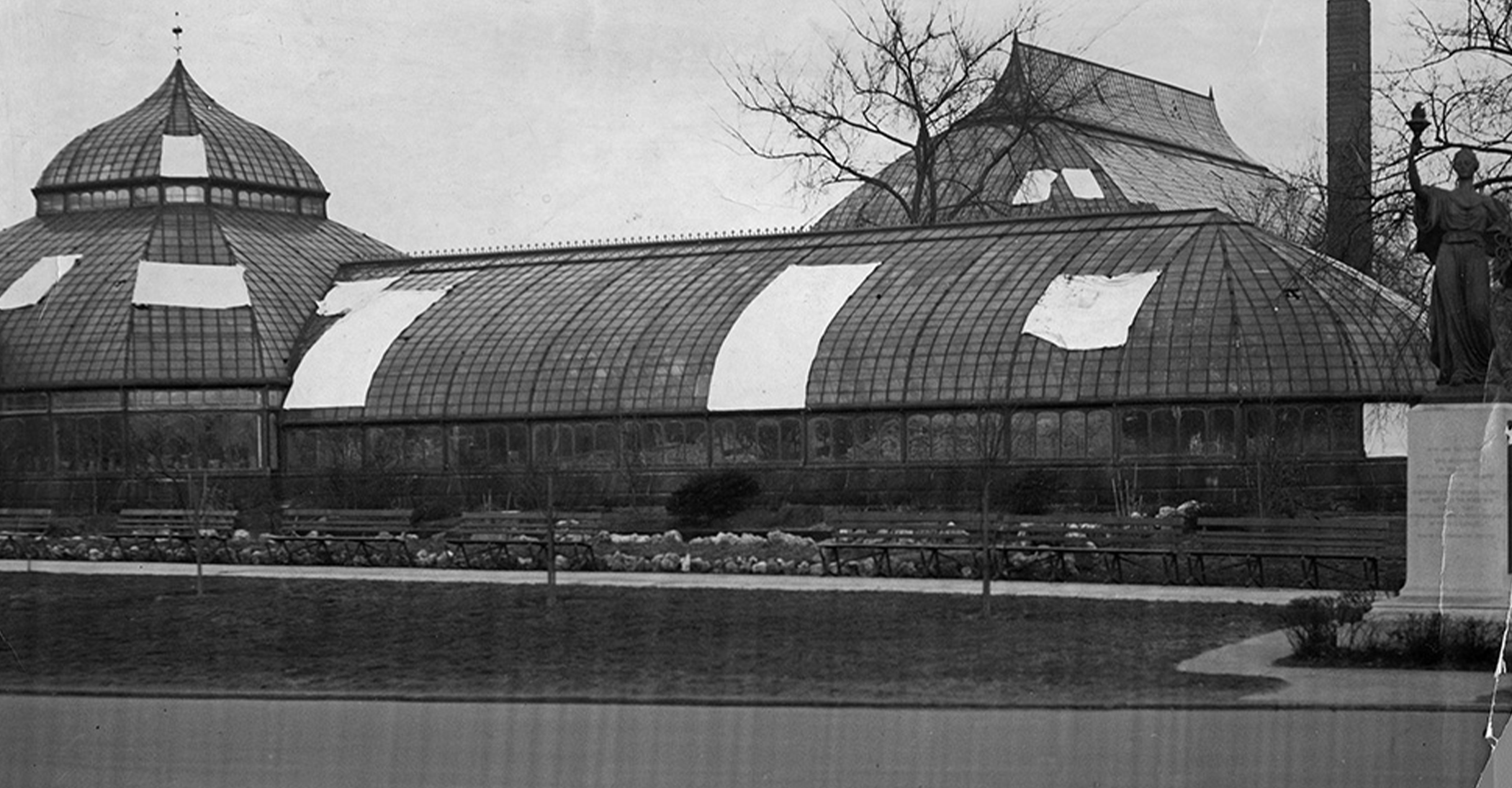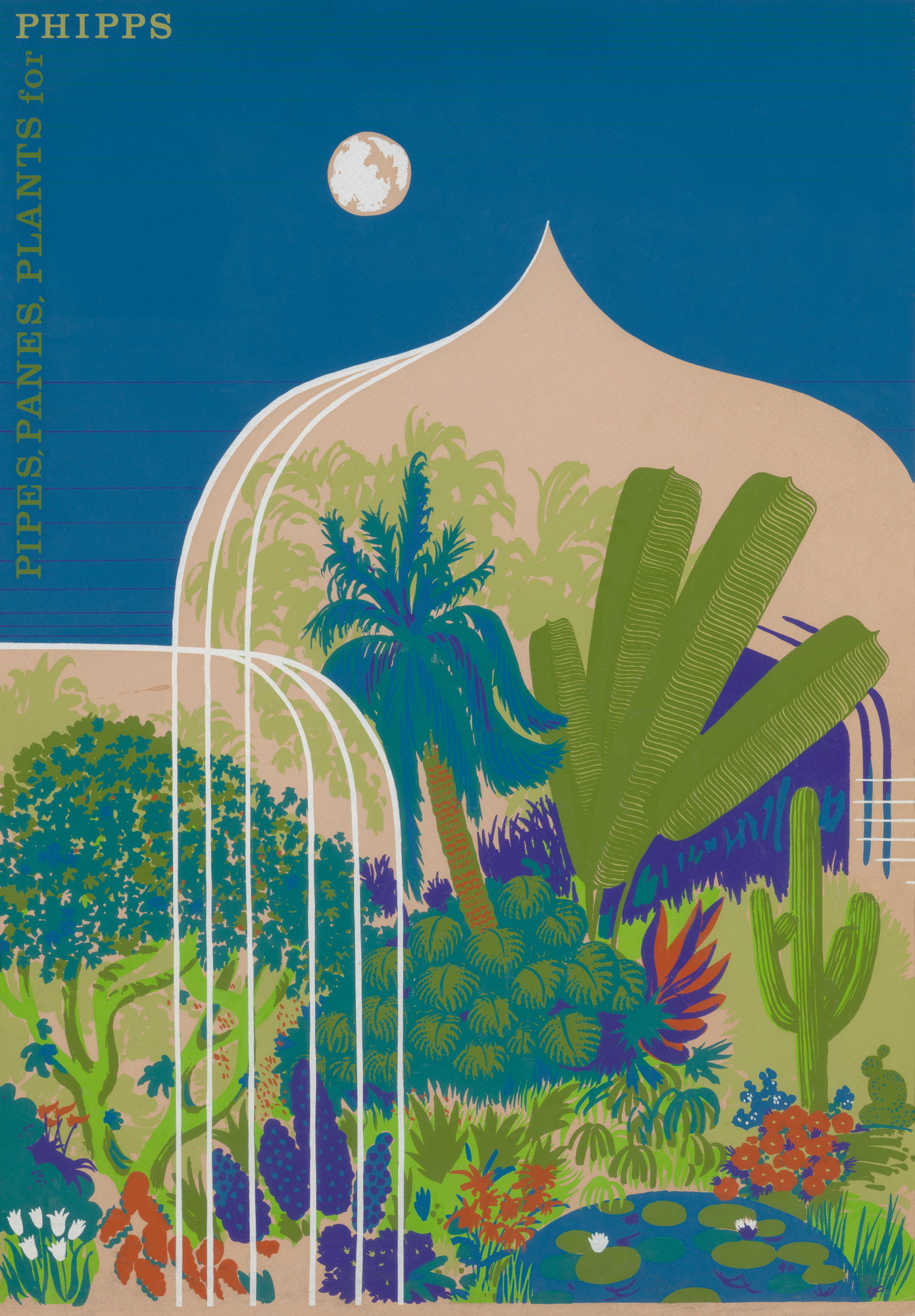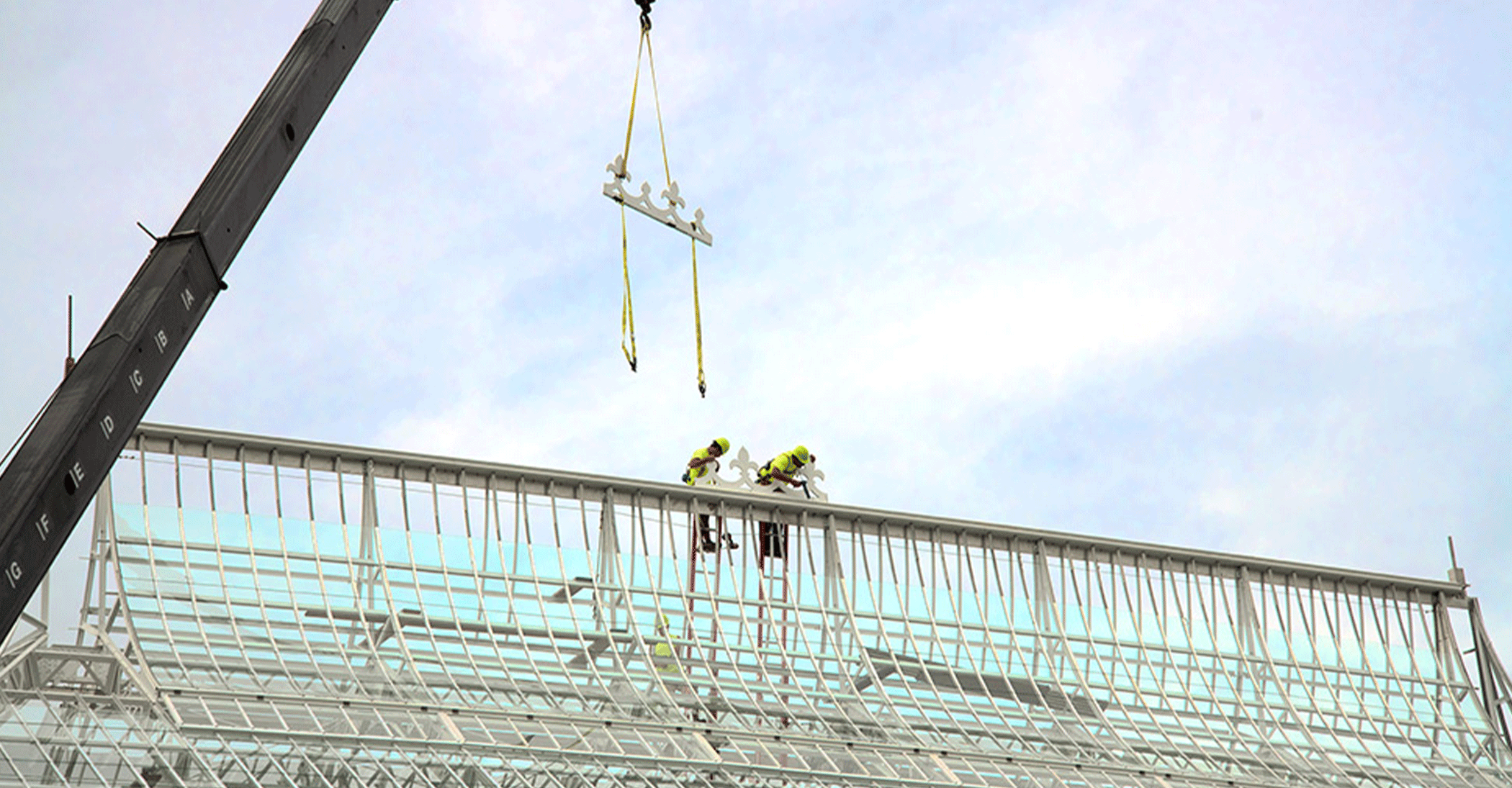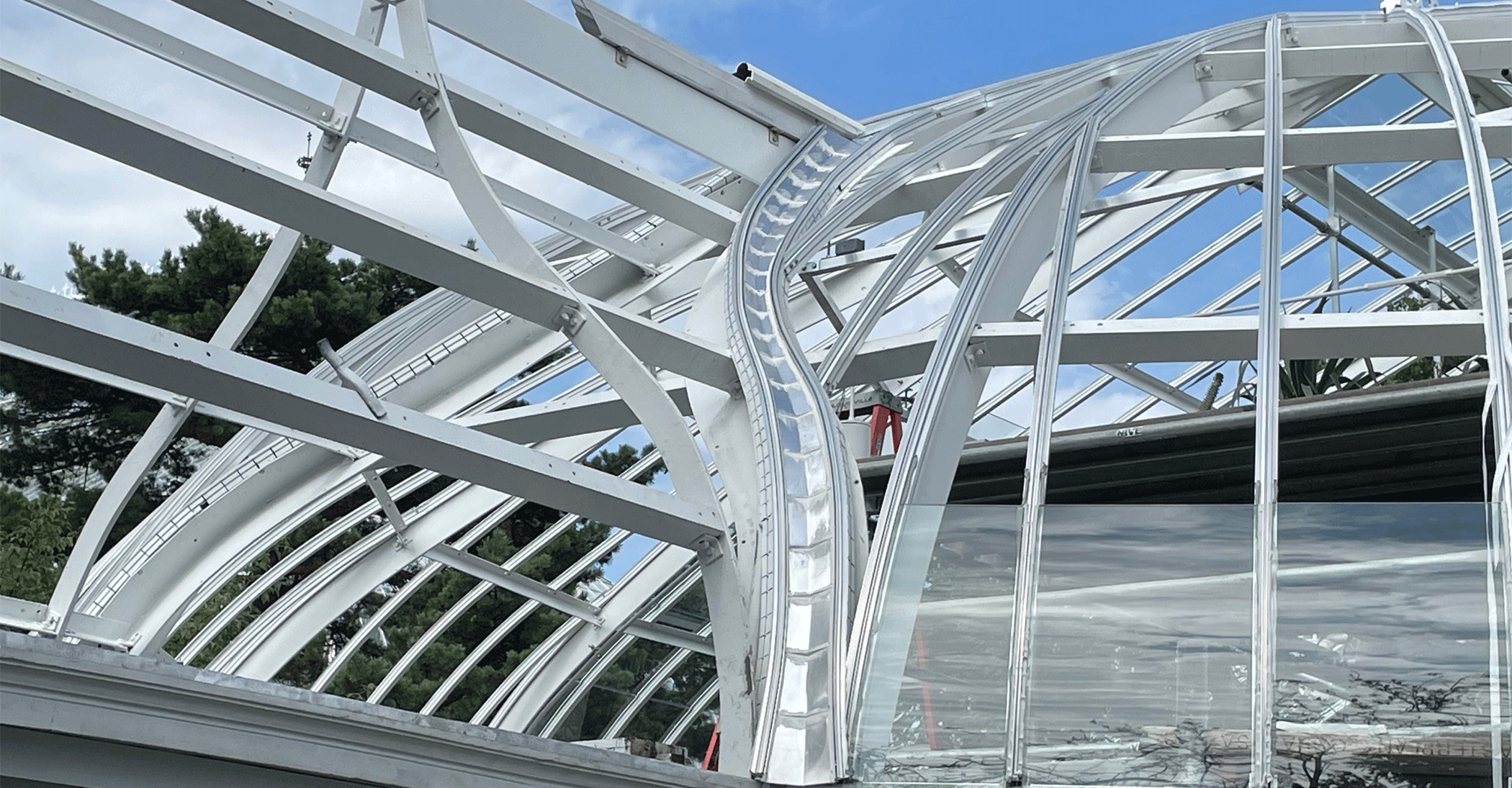Blog

Glasshouse Renovations: Past and Present
In 1893, Henry Phipps presented Phipps Conservatory as a gift to the city of Pittsburgh. In the following century, the building has been through disasters, numerous renovations and over 130 years of wear and tear. Our glasshouse has been through a lot, but the dedicated staff at Phipps are stewarding our green oasis into the twenty-first century and beyond. You may have noticed that several rooms in the Conservatory have been closed to the public throughout the Summer Flower Show. We are currently at the end of a long series of renovations that are designed to not only update the space but make sure that the Conservatory is here for future generations to enjoy.
In February of 1937, a severe winter storm blew through Pittsburgh. The 60 mph winds carrying snow and hail broke several panes of glass and ripped part of the roof the Conservatory. The elegant crowning ogee on the Palm Court had to be removed because of the extensive damage. The icy winter temperatures quickly took a toll on the tropical plants which caused police and firefighters to work through the night, protecting the displays using canvas blankets. Superintendent Ralph Griswold estimated the financial loss to be $20,000 which is approximately $436,000 in 2024 dollars. While there was already a renovation in progress, the storm damage revealed the true state of the Conservatory: the 40-year-old building was rapidly deteriorating. The Conservatory was then closed for the next 20 months while extensive repairs and restorations were completed.

By 1975 the glasshouse was once again in a less-than-optimal state, plagued with leaks and metal corrosion, and it was time for the next extensive renovation. A group of private citizens took up the cause, beginning a campaign to raise the funds needed to repair the historic building. The group organized by Elizabeth Childs, called Pipe, Panes and Plants, raised $50,000 from private donors.

In 1976, Phipps Conservatory was added to the National Registry of Historic Buildings. This opened an opportunity for an even larger renovation where many of the original features could be restored. The Serpentine Room, which had been renamed the Boarder Garden, had its curving pathway restored. Modern lighting was also installed as Victorian lamp posts. These renovations were an attempt to bring back some historic accuracy to the Conservatory. Other improvements included new electrical, plumbing and steam heating systems. Because of the extensive construction, the spring show that year was moved to the City-County Building which was the first time in Phipps 85-year history that the spring show was not hosted in the Conservatory!
The current renovations began in 2002, with rooms being gradually updated, starting with the Gallery Room, the Serpentine Room and the South Conservatory. Finally in 2018, Palm Court was renovated, each glass pane was replaced and the iconic ogee on the roof was rebuilt, restoring grandeur that had not been seen since the storm of 1937. The current phase of the renovation, including the Sunken Garden and the Desert Room were started in 2020 and, after a delay, should be finished by the end of 2024.

The renovations have two objectives, replacing outdated equipment and restoring the glasshouse to its original appearance. The goal is to restore the look of each room to its original state, so that when you visit, you’ll see what visitors would have seen at Phipps on opening day in 1893.
While the goal is to maintain the original look of the rooms, there are important updates that you might not notice. The original construction of the rafters that support the glass, were wood covered with metal caps. Unfortunately, this not only encouraged water damage and rot, but hid the extent of the damage. All the wood has been replaced with aluminum which will not rot or rust. Each pane of glass is custom cut, delivered in large wooden crates and then installed by hand. It is painstakingly detailed work! All the new glass panes are safety glass designed to not shatter when stressed, unlike the safety glass used in car windshield that fall away in non-jagged pieces. Our glass is coated in a thin layer of film that allows them, if damaged, to safely stay in place, protecting both people and plants, until they can be replaced. These updates should last 100 plus years ensuring that Phipps can be appreciated into the next century.

Phipps is also making changes during the current renovation to further our environmental mission and the glasshouse decarbonization initiative. We are updating the current steam heat system to hot water heat. Phipps steam heat is generated by converting natural gas to steam. According to Peter Thompson, Phipps Director of Facilities, the hot water heating system will be offset fossil fuel use through a combination of geothermal wells and heat pumps that are all electric. The electricity will be generated using solar panels and will result in net zero energy use. Along with this infrastructure improvement, each room is receiving more energy efficient lighting and new destratification fans to better circulate air and heat.
When asked what Peter would like our guests to know about the renovations, he emphasized that, “though the closed rooms may be an inconvenience right now, the work that we are doing is going to allow Phipps to exist for their children’s children.” The historic value that is being added to the glasshouse is precious, offering visitors a sense of place they can only experience in Pittsburgh at Phipps!

